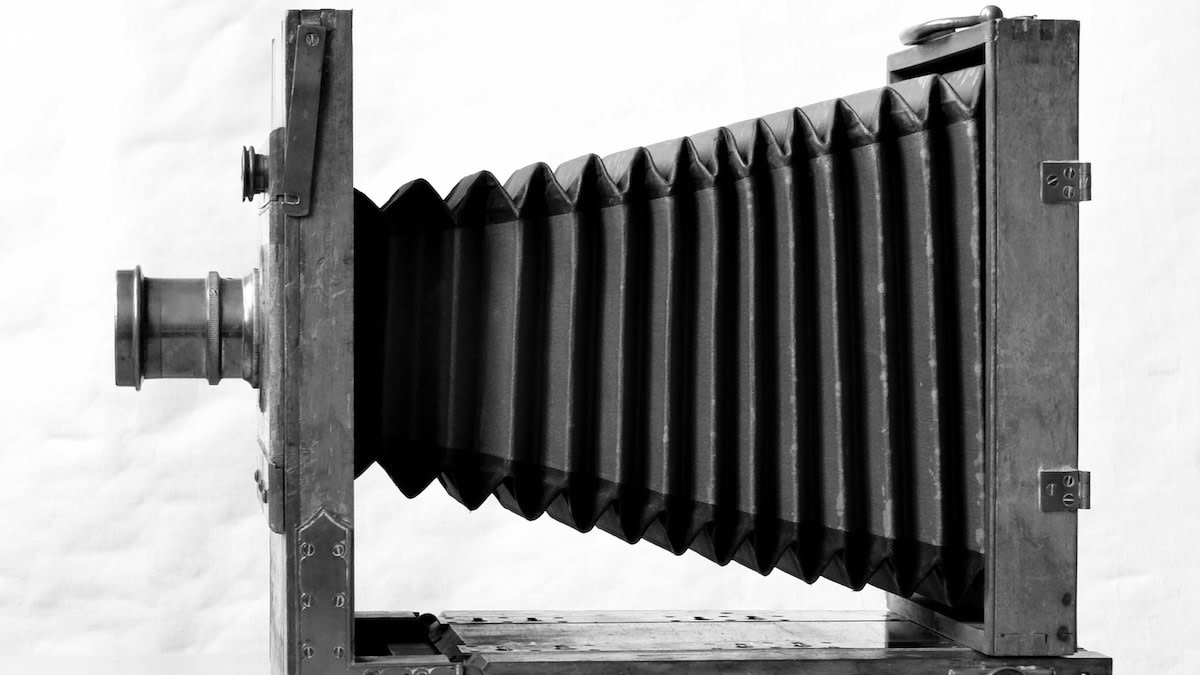When Was the Camera Invented? A History of Photography
Written by MasterClass
Last updated: Feb 3, 2022 • 4 min read
The history of cameras traces back to ancient Greek and Chinese civilizations.
Learn From the Best
What Is a Camera?
A camera is a device with a lens, a shutter, and a sensor that captures and records visual information. When a film camera takes a picture, the camera lens briefly exposes the film strip to light that passes through the lens. This exposure burns an imprint into the emulsion and creates what’s called a latent image. Once captured, that latent image can be developed into a negative, which can, in turn, be projected onto light-sensitive photo paper to create a photograph. In digital photography, photons of light pass through the lens and onto a digital optical sensor. These sensors are composed of millions of photodiodes, which, combined, create a photographic image.
A Brief History of the Camera
The path from the earliest cameras to today's high-end DSLR cameras spans centuries:
- The earliest cameras: The first camera known to history is the camera obscura. Conceptual descriptions of camera obscura can be found in Chinese texts from 400 B.C. and in the writings of Aristotle, around 330 B.C. By roughly 1000 A.D., the concept of a camera obscura was articulated by the Arab scholar Ibn Al-Haytham. A camera obscura does not take photographs, but rather it focuses light through a lens (technically a small hole) and projects it onto a screen. Pinhole cameras are close variants on the camera obscura. These devices serve as precursors to everything from still photography to movie cameras and motion picture projectors.
- Handflex reflex camera: In 1685, the German author Johann Zahn offered a design for what is known as a handheld reflex camera. Yet no inventor physically realized the camera until the French inventor Joseph Nicéphore Niépce created a prototype in roughly 1816.
- The photographic camera: While the invention of the camera draws on centuries of contributions, historians generally agree that the first photographic camera was invented in 1816 by Frenchman Joseph Nicéphore Niépce. Niépce developed photographic images onto paper lined with silver chloride, and a photograph he produced in roughly 1826 stands as the oldest surviving photograph. This first photograph remains on display at the University of Texas in Austin.
- Daguerreotypes: Louis Daguerre created a more practical camera model in 1829. Images taken by Daguerre's camera were known as daguerreotypes, and his method defined cameras of the mid-nineteenth century. The daguerreotype process involves coating a copper plate with silver, sensitizing it in iodine, then developing it over hot mercury. Henry Fox Talbot's calotype, a daguerreotype variant, also enjoyed popularity during this era.
- The mirror camera: The problem with Daguerre’s camera system was that images faded quickly. This was remedied by American inventor Alexander S. Wolcott, who created what became known as the mirror camera. This camera produced a positive image instead of a negative one with reversed colors.
- Instantaneous exposures: Then, in 1871, Richard Leach Maddox invented a gelatin dry plate that produced instantaneous exposures—functioning as a sort of precursor to the Polaroid cameras of the twentieth century.
- Kodak: Analog photography did not reach its zenith until American George Eastman pioneered the use of roll film cameras. Beginning with paper film but quickly switching to celluloid, Eastman started selling a box camera he called a Kodak in 1888. A single Kodak camera came with 100 exposures and had to be sent back to the Eastman Kodak factory in Rochester, New York, for development. In 1901, these initial film cameras then gave way to Kodak's Brownie cameras, a cheaper variant.
- 35mm film camera: Between 1905 and 1913, camera companies introduced standalone rolls of 35mm film that could be inserted into and removed from the user's own camera. Oskar Barnack, a German inventor and photographer, is generally credited for the advent of 35mm film cameras, beginning with the Leica, which he created for the Leitz corporation. However, Kodak would quickly become the leading provider of photographic film for the world's 35mm cameras, with other companies like Fujifilm later providing robust competition.
- Twin-reflex camera: The camera enjoyed a major advance with the invention of lens reflex cameras, which introduced features like viewfinders, pentaprisms, variable shutter speeds, and detachable lenses. The earliest of these cameras were twin lens reflex cameras (or TLR for short), offered by the German company Franke & Heidecke in the 1920s. TLR cameras were quickly replaced by single-lens reflex cameras (or SLR).
- Digital SLR camera: The first DSLR camera was made in 1999, and after only a few years of technological improvements, largely replaced single-lens reflex cameras. A digital single-lens reflex camera (DSLR or digital SLR) is a type of camera that delivers high-end image quality and is widely used by amateurs and professionals alike. A DSLR camera allows you to see the exact image you’re shooting directly through the viewfinder, allowing you to visualize and capture your scenes better.
- Mirrorless camera: In 2004, Epson released the first mirrorless camera, a type of camera that works without a reflex mirror. Light passes through the lens directly to the digital sensor, which then displays your image on the camera’s LCD screen, allowing you to adjust settings and preview your image before its shot. While previously not considered an interchangeable-lens camera, modifications and advancements have paved the way for more mirrorless lenses, bringing this camera to the forefront of customizable photography.
Want to Learn More About Photography?
Become a better photographer with the MasterClass Annual Membership. Gain access to exclusive video lessons taught by the world’s best, including Annie Leibovitz, Tyler Mitchell, Jimmy Chin, and more.
